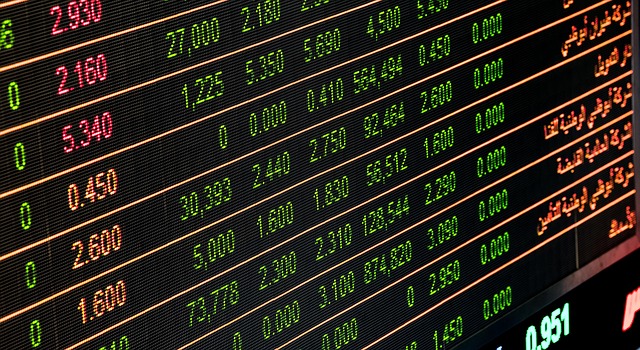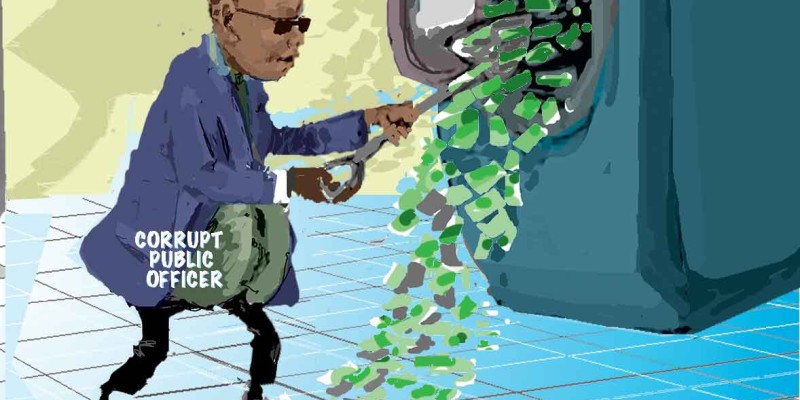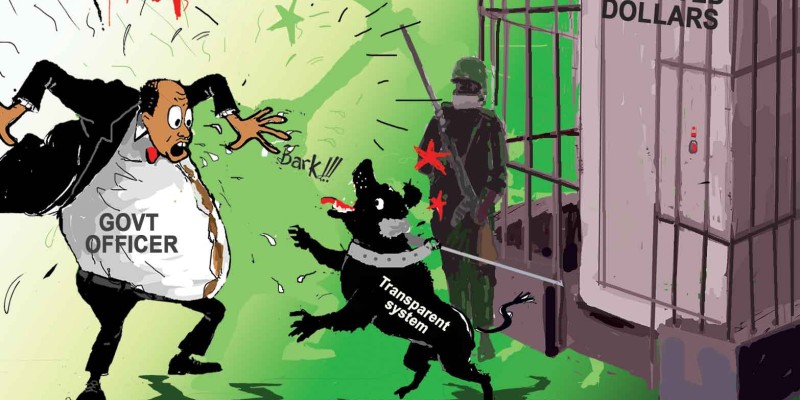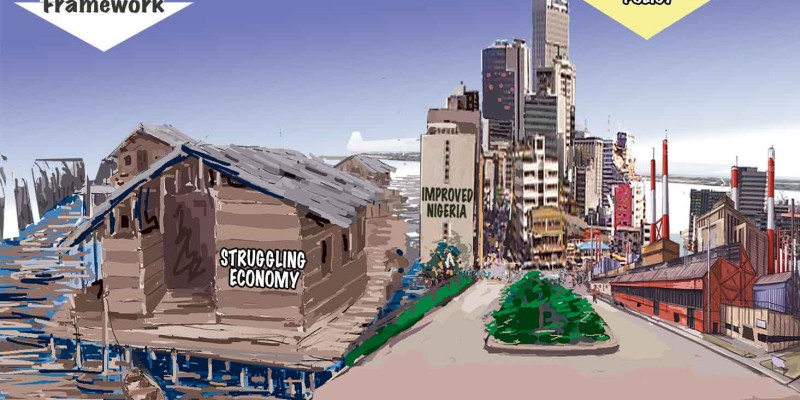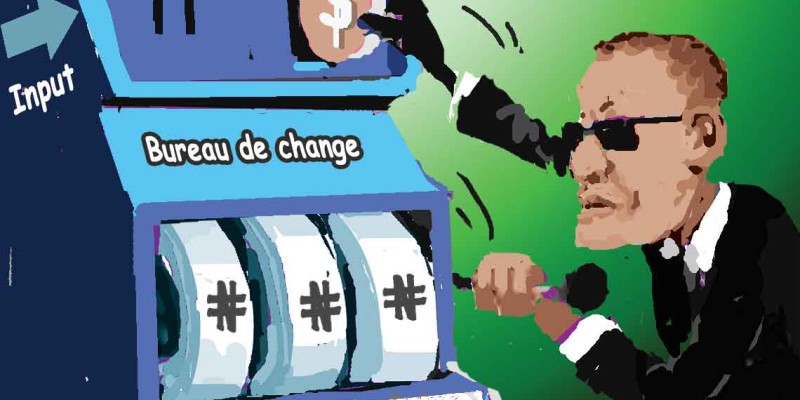Font size:
Print
THE UNRESOLVED BURDEN OF
5 RATES OF NAIRA TO THE DOLLAR
BY: LLES LEBA (Email: llesleba@hotmail.com)
The strength of a nation’s currency is an expression of the vibrancy, virility and robustness of that country’s economy. Conversely, a very weak currency therefore is a mark of a country with a perverse economic mix.
Thus, a country which is fortuitously blessed with enviable material resource endowment, but regrettably, burdened with a low quality human resource base, will actually end up poor and its poverty will be expressed in the form of a distressed economy with an increasing weak national currency, just like the Naira.
Our currency has plummeted in 30 years from 60 kobo=$1 (when we could not be described amongst the world’s poorest) to the current N132.80=$1 to become classified amongst the world’s poorest, even when our $17 billion reserves is at the highest levels in 30 years! What a veritable paradox, alarmingly, there is no tangible impact on social welfare.
A country’s economy is considered to be relatively stable if its foreign reserves readily cover up to six months of imports; thus a nation’s export competitiveness and consequent trade balance will induce currency appreciation. Regrettably, despite, Nigeria’s positive trade balance for several years, with reserves that cover over 18 months of imports according to CBN sources, the Naira inexplicably failed to meaningfully appreciate against the dollar.
The cause of this contradiction can be found in the manner our foreign exchange earnings are currently infused into the economy. The current practice is for the CBN to consolidate the distributable dollar revenue each month and then convert the total to a naira value at a rate unilaterally determined by the CBN. This practice requires the provision of a huge naira cover which keeps the mints busy while the inflationary product of this arrangement is then ironically restrained when the same CBN becomes compelled to borrow back the resultant Naira surplus through the sale of treasury bills with aggressive and distortional interest rates of up to 17 percent; surprisingly, thereafter rations of the dollars retained by CBN after the Naira substitution would be auctioned in a money market with undeniably embarrassingly surplus Naira.
The inability of industries to thrive with CBN induced interest rates of 25 percent and above, the related high rate of unemployment, and the exceedingly high Commercial Bank profits despite an embattled real sector are all traceable to this faulty payments model.
The scourge of multiple exchange rates is also a fallout of the inability of the current system to produce a workable single naira exchange rate. Alarmingly, the Nigerian economy presently features at least five different exchange rates. Let us take a cursory look at some of these.
THE FIVE RATES OF THE NAIRA
• The rate at which the CBN converts the monthly distributable dollar revenue into naira before sharing to constitutional beneficiaries maybe described as the Revenue Rate; this rate hovered between N100-110=$ since 2001.
• The special rates for oil marketers’ fuel imports: this rate became unavoidable after the upward surge in demand of fuel importers for foreign exchange after deregulation. There is no official confirmation as to the applicable rate but it is unlikely to have remained at N123=$ as before.
• The N132.80=$ DAS rate is generally regarded as the official rate. This rate is determined at a weekly auction in which the CBN as in a monopoly provides all the dollar supply; however, by depositing the huge cash surpluses of government agencies in the commercial banks, the CBN inadvertently partly funds the banks’ purchase of the dollars. Evidently, there is no semblance of a free market with multiple sellers and buyers of dollars. What we have is a monopoly at both ends of the market by the CBN (i.e. monopoly of dollar as well as Naira supply).
Expectedly, the Naira rate has never moved loyally in sync with our reserves, which have remained impervious to increasing dollar supply. For example, the dollar lost 25 percent against most international currencies in the last year or so, yet, despite Nigeria’s consistent trade surpluses with increasing reserves, the naira remained resistant to the dollar at N132.8=$ for the past eight months. This rate becomes a depreciation of over 20 percent when compounded with dollar depreciation against the Euro and Sterling presently.
• The export proceeds rate is the rate at which banks sell foreign exchange inflow from private sectors exporters and foreign direct investors outside CBN sources. The applicable rate is usually some percentage points higher than the official DAS rate. Cynics have argued however, that most of the funds traded as export proceeds are actually round tripped foreign exchange from the official DAS. Incidentally, CBN have also after derived the indulgence of several banks in large-scale round tripping, Surprisingly, so far, only one or two banks have been given slap on the wrist sanction! Cynics have also argued that the gains from round tripping may be partly responsible for the bloated expansion and apparent profitability in the banking industry despite the continuing collapse of the real sector whose fortunes under normal circumstances should move in unison with that of banks!
• The interbank rate is adopted for foreign exchange transactions between fellow banks. The foreign exchange supply to this market is derived from the so called export proceeds market referred to above.
From the ongoing, we have identified five different exchange rates already, but we cannot complete this piece without mention of the black market rate, which has been variously described as the tail that wags the dog! The black market, by its nature is relatively shallow as can be observed in the frenzy of operators to consolidate exchanges above $1000 at any of the ‘joints’ in Martins Street or Allen Avenue. So why should such a presumed small market that primarily serves, the forex needs of travellers surprisingly control the official DAS rate. Generally, the gap between the black market rate and the DAS rate has varied from about 4-15 percent since 2001 to the current N140=$. The CBN equalization strategy is to attempt to close the gap between the black market and the official rate, but sooner than later the black market rate would once more outstrip the DAS rate and this will once again be followed by further downward movement of the (official) price of the naira against the dollar by the CBN. – An endless cycle of devaluation of the naira.
The net consequence of having a multiplicity of exchange rates against the naira is an incoherent and obtuse foreign exchange market. The leakages which are made possible by the system translate into a virus in the economic system where the absence of a level playing ground creates distortions to a free market system for the efficient allocation of resources. The system encourages insolent rent seekers and disturbs the ‘work and reward ethics’ as huge sums can be made without any direct contribution. A scenario that can quickly kill enterprise and reduce us all to rent seekers or dependants of rent seekers.
A country with a multiplicity of exchange rates will have a rudderless monetary framework and will have an inappropriate depreciating and weak currency, even in a reality of increasing external reserves!
A recipe for economic backwardness!
SAVE THE NAIRA, SAVE NIGERIA!


